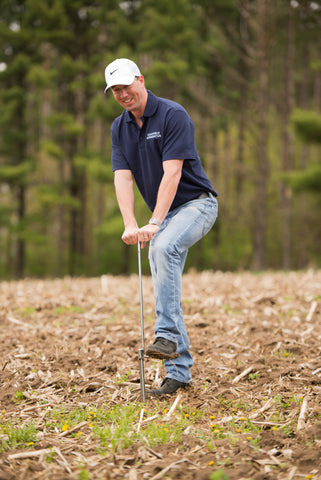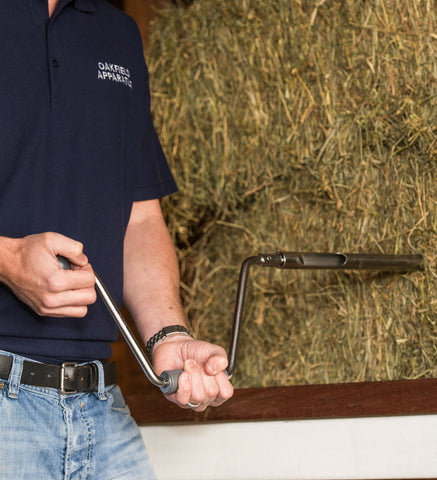Usage Tips
To get the best results from your sampling equipment, follow these handy tips:
TIPS FOR SOIL SAMPLING:

TIPS FOR HAY/FORAGE SAMPLING:
TIPS FOR SOIL SAMPLING:

- To obtain a representative sample, avoid sampling the edges of the area of interest and other unusual spots.
- Divide field into uniform sampling areas and follow a random pattern when sampling within an area.
- Avoid sampling when the soil is very wet or within six to eight weeks after lime or fertilizer application.
- Take numerous samples. Conditions may vary in different parts of the field, farm or lawn. 20 samples taken randomly is recommended to get a representative sample.
- Place feet on either side of the soil tube as close as possible when withdrawing the tube from the soil to avoid breaking turf.
- To avoid losing a tip, always turn soil probes to the right.
- Replace tips when they show excessive wear.
- Push or pound the soil sampler into the ground. Twist to the right only to break off the core, then remove the soil tube slowly from the soil. If you do this, the soil tube will come out of the ground without breaking soil or turf, and you will have a perfect soil sample.
- To see how deep you are in the soil, look for the 6 inch markers on the tubes.
- Do not try to remove soil sample from tip end.
TIPS FOR HAY/FORAGE SAMPLING:
- To obtain a representative sample, take samples from at least five bales from a group of 20-30 bales. If you’re testing a group of 100 bales, sample at least 15 to 20 bales.
-
 Bales should be selected at random throughout the entire group.
Bales should be selected at random throughout the entire group. - Use an S-5 Serrated Tip to comfortably cut through hay.
- When sampling a round bale, sample from the middle of the rounded side, not the flat side. For a square bale, take the sample from the middle of either side. Sample in the same location on each bale.
- Make sure any netting is moved away from the testing area and doesn’t interfere with your sampling.
- Use your bodyweight to help push the probe into the bale of hay.
- Hay probe should be inserted into and removed from the bale in a straight format to reduce the possibility of bending the tip.
- Do not try to remove sample from tip end.
- Do not allow sample to overheat or lose moisture. Send samples to a lab asap.
- Replace tips when they show excessive wear.

 Bales should be selected at random throughout the entire group.
Bales should be selected at random throughout the entire group.